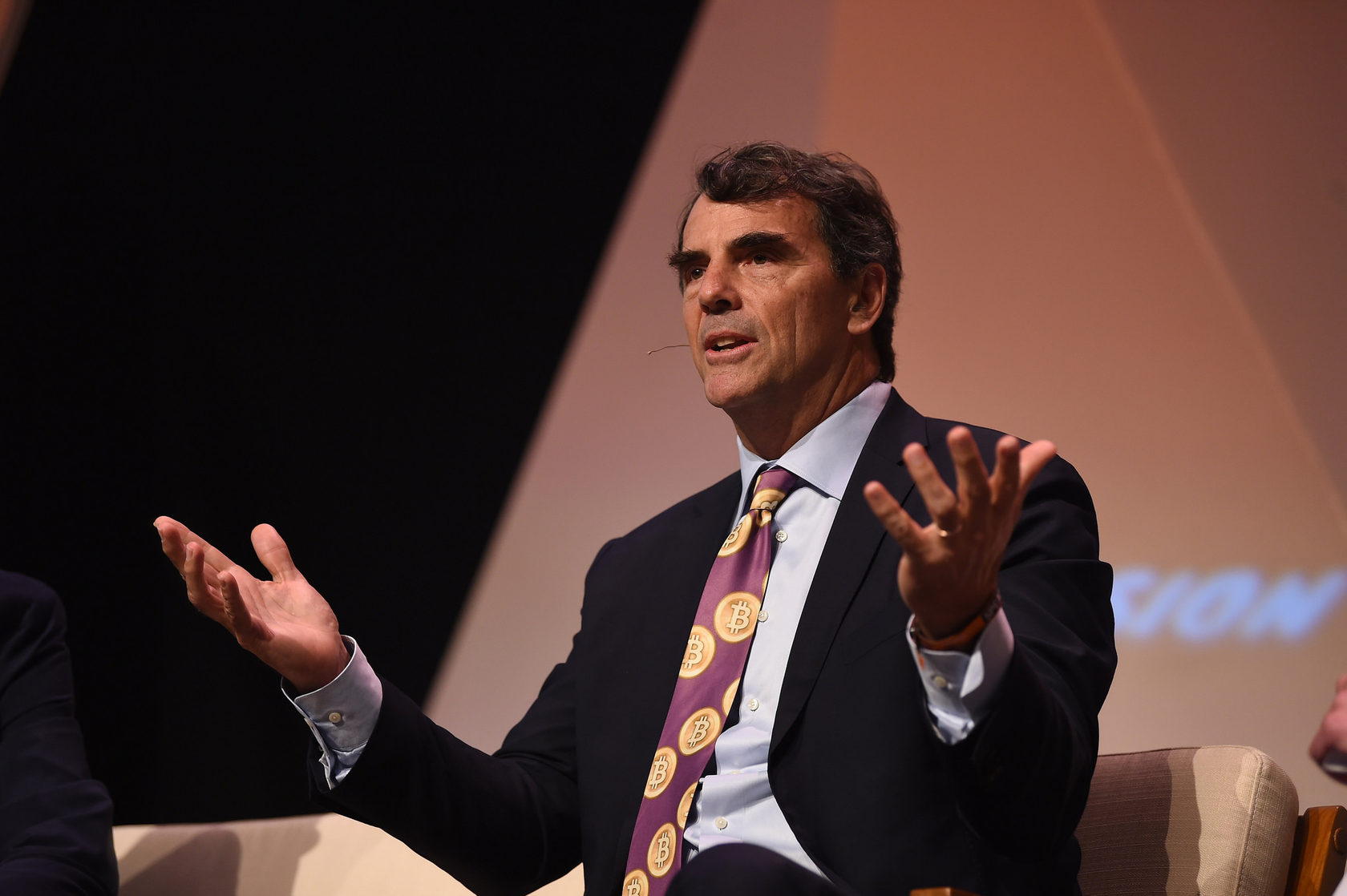Are Any Ethereum Killers Ever Going to Steal the Number Two Spot in the Crypto World?
Jack Choros
Content Marketing
It seems as though ever since its release in 2015, the latest and greatest altcoin projects of the present day seem to promise to be the altcoin project that will overthrow Ethereum, solve the scalability and security issues plaguing the broader blockchain technology industry and ultimately take over as the second most valuable cryptocurrency in the world. And yet, here we are in 2020 and Ethereum is still holding strong thanks to the continued innovation of those working on the Ethereum blockchain.
The reality is in a fast-moving space like blockchain technology and cryptocurrency, having first mover advantage is everything. It’s probably why developers don’t seem to have any qualms about using a programming language specifically invented for Ethereum like Solidity. It also seems to be the reason most decentralized finance projects and initial coin offerings depend on Ethereum to launch and evolve.
It’s also the reason Ethereum has a market capitalization of $55.7 billion Canadian and counting at the time of this writing. That’s $35 billion more than the third richest cryptocurrency and all of the land. That’s the U.S. Dollar Tether token.
So, the question remains, is any other altcoin project ever going to be the real Ethereum killer? First mover advantage aside, the innovation taking place within competing projects is amazing. As a whole, developers involved with these other projects are pushing forward the entire industry and making incredible and tangible improvements on smart contract platforms and consensus algorithms, and other aspects of decentralized technology.
Still, for the sake of this post, we’re going to ignore first mover advantage as a factor and talk about the Ethereum killers lining up to try to take over and discuss whether any of them have a real chance.
Enter the Ethereum Killers
First thing is first. This post is meant to be educational. It’s not investing advice. It also doesn’t represent a complete list of Ethereum killers. There are many projects in the cryptocurrency space that claim to be that, so we’ve just arbitrarily chosen a few of the most notable projects competing as smart contract platforms and 2nd/3rd generation blockchains. The reality is the list of projects trying to do something better than Ethereum includes too many names to mention in one blog post. After all, there are thousands of cryptocurrencies trading on the open market today.
So here, what we’ve done is created a short list of five of the most popular Ethereum competitors. We will offer a brief overview of each and explain their mechanics. Just keep in mind that ultimately in a fast-moving space like cryptocurrency is, any Ethereum competitor is going to have to accomplish a lot in order to truly overthrow the one project that holds the altcoin throne as king of the hill.
That being said, it’s time to review Ethereum’s top five competitors (in no particular order): Cardano, Tezos, EOS, NEO, and Polkadot. Let’s go through them one by one.

Cardano
Cardano is the brainchild of founder Charles Hoskinson. Hoskinson is one of eight cofounders of the Ethereum blockchain, so one of his competitive advantages is that he knows how to compete against it and has his own vision for doing so. But it’s also why six of the other founders have left Ethereum to start their own projects (including another project we will talk about in a moment).
Cardano’s initial coin offering launched in January 2015 selling 26 billion tokens worth one quarter of a penny each. Its goal is to solve the scalability and security issues plaguing blockchains much like the other competitors listed in this post. The project uses a programming language called Haskell. Ouroboros is an improved proof-of-stake protocol that acts as the foundation of the whole project.
There are five phases in the development of Cardano including Byron, Shelley, Goguen, Basho and Voltaire. Byron laid the basic foundation for the Cardano blockchain. Shelley is currently being implemented introducing the proof-of-stake mechanism that will allow those staking tokens to the network to earn up to 10% per year on their investment. Goguen involves building a virtual machine and programming language that will make it easier for programmers to develop projects on blockchains in general. Basho is the fourth phase of development which focuses on improving the scalability and security of the Ouroboros platform. The fifth and final phase, Voltaire, focuses on governance.
Most recently, the team at Cardano launched an update called Hydra, which theoretically allows the blockchain to scale to 1 million transactions per second. This is because 1,000 staking pools can work together to each handle 1,000 transactions per second. The update itself is based on a concept we’re all familiar with. The idea of filesharing through torrents like BitTorrent. The more people that work together to provide data, the faster that data can be accessed.
Tezos
Tezos launched its initial coin offering in July 2017 with investors acquiring tokens at $0.47 each USD. Today, the token is trading around three dollars Canadian each making Tezos one of the few projects whose token went up in value considerably after the initial coin offering. Most projects fail right after their offering, believe it or not.
Tezos has its own twist on the proof-of-stake consensus algorithm. In this twist, it means anybody staking coins to the network in order to secure it and earn an interest rate in return can use a delegate to do the staking for them. This means the investor staking their tokens doesn’t actually give up ownership of the tokens in any way.
Like many other competitors, Tezos uses its own programming language called Michelson. Michelson is considered easier to use than Ethereum’s Solidity in many ways. But the biggest advantage Tezos offers is the idea of a self amending cryptographic ledger. Any developer participating in the Tezos protocol can put forward a proposal for how to improve the blockchain. This means that developers can work on whatever they are interested in without having to fork the code. This means there will never be a Tezos Cash or Tezos Gold the way there is a Bitcoin Cash or Bitcoin Gold for example. There will simply never be a need for it.
The most recent feather in the cap of Tezos is Dexter, the first-ever decentralized exchange made for the Tezos blockchain. Adoption has been slow so far, but it makes sense that an Ethereum competitor as large and as valuable as Tezos would try to get into the decentralized finance space.
Tezos currently ranks in the top 20 of all cryptocurrency projects by market capitalization. It is currently worth more than $2.2 billion Canadian. A significant portion of Tezos’ popularity comes from the fact that billionaire crypto investor Tim Draper firmly believes in the project.

EOS
EOS’ initial coin offering took place around the same time as that of Tezos in September 2017. Dan Larimer is the founder of the project. EOS raised more than $1 billion and at the time its initial coin offering was complete, that fundraising effort stood as the most successful of all time.
EOS certainly benefits from the brand recognition carried by Larimer’s name. He’s also the founder of two other popular crypto projects that happen to have huge market caps and thus more visibility in 2017. A crypto exchange called BitShares, and a popular crypto-based social media platform called STEEM.
Aside from drawing in investors thanks to its hugely successful initial coin offering, EOS garnered attention because of its delegated proof-of-stake consensus model. The model allows top producers of transaction blocks to vote on consensus. The top 20 block producers at any given moment get to be part of the next vote and the 21st voter is randomly selected. It’s this centralized voting structure that allows the EOS blockchain to theoretically scale to millions of transactions per second. That’s the advantage. The disadvantage is that it centralizes power because not every node is required to achieve consensus.
EOS separates itself from Ethereum in one key way. In the Ethereum ecosystem, developers pay fees to the network in order to rent resources. EOS on the other hand allows the developer to be the owner of their resources, meaning they get to earn a profit off of them and they are not paying rent to the network. This is a great benefit, but it also centralizes power.
Although EOS made waves during its initial coin offering, the project’s popularity has waned over the last year or two.
NEO
NEO has always been known as China’s Ethereum. At the height of the 2017 ICO boom, the project routinely found itself in the top 10 among all cryptocurrencies by market capitalization reaching a token price of nearly $200 USD each, even though the tokens could be had for mere pennies when it first launched.
One of NEO’s key contributions to the world of smart contract platforms is its delegated Byzantine fault-tolerant algorithm. NEO’s goal is to enable users to digitize any kind of asset on the blockchain, not just currency. The delegated Byzantine fault-tolerant algorithm assigns actors called bookkeepers that reach consensus together. Only one third of bookkeepers need to reach consensus in order for a decision to be made. This is more efficient than requiring consensus agreement from every node and thus makes it faster than Ethereum.
Developers in the NEO community are currently working on a project called Flamingo which will allow NEO to officially enter the decentralized finance space. That makes complete sense given what’s going on in the DeFi world and how much it’s grown in popularity over the past 12 months. NEO could one day be the king of transferring real world assets.

Polkadot
The man behind Polkadot is Gavin Wood. Wood worked alongside Vitalik Buterin, Charles Hoskinson and five other cofounders to invent Ethereum. Aside from being attached to the world’s second most valuable cryptocurrency, Wood has another claim to fame. He is the sole inventor of Ethereum’s programming language, Solidity. Who better to challenge Ethereum than this guy?
Polkadot is experiencing a meteoric rise and now sits in the top 10 among all cryptocurrencies by market capitalization. Considering that, it makes sense why many investors feel like the project came out of nowhere to steal the thunder of other smart contract platforms, but that couldn’t actually be further from the truth.
The Polkadot whitepaper was actually developed by Wood and others back in 2016, and the initial coin offering raised more than $145 million USD. However, Parity, a sister company responsible for holding onto the funds had more than 66% of those ICO dollars frozen and never recovered due to a technical flaw. This meant that Polkadot had to rely on two other rounds of financing in order to become a reality.
The good news is the fundamentals of the project itself are definitely gaining a lot of attention now that the past is behind Polkadot. The whole goal of Polkadot is to offer increased security and scalability as well as improve the interoperability of blockchains just like many of its competitors. The project does this by using a relay chain as the key chain through which other parallel chains communicate. Parallel chains can have their own tokens and their own use cases. This means that Polkadot offers developers virtually an infinite number of possibilities as far as what they can develop.
The consensus algorithm that drives Polkadot is also very innovative. It features four different players. Nominators select a validators. Validators select collators. Collators pool together transactions and prove that they are genuine, sending the information back to the validators.
Validators and collators can both act as fisherman. A fisherman’s job is to report bad behaviour on the network and catch malicious validators. This way, everybody in the network works together to achieve consensus, but there are always actors floating around looking to catch anything suspicious.
Will Any of These Altcoin Projects Top Ethereum?
Whether or not any of the above projects will topple Ethereum as the second most valuable cryptocurrency in the world is anybody’s guess. But apart from introducing the concept of a smart contract to the world and doing it first, Ethereum is clearly inspiring many of its past cofounders and other developers with their own ideas to come up with a better way to make blockchains more scalable and more secure. Whether or not you’re able to pick the overall winner as an investor is one thing, but as blockchains get faster and faster and more secure, the truth is that we as investors are all going to win in the long run.
That said, you can’t benefit from any long-term gains unless you have skin in the game in the first place.
How To Buy Into Ethereum Competitors In Canada
Netcoins is a cryptocurrency exchange in Vancouver allowing crypto investors like yourself to buy Bitcoin, Ethereum and a handful of other cryptocurrencies. It’s the perfect fiat-to-crypto on-ramp for a progressive investor like yourself to join the race to topple Ethereum.
Remember. Slow and steady wins the race, unless you’re talking about blockchain technology. Become a Netcoins customer today.
Looking to buy and sell Ether? Netcoins is Canada’s first publicly owned crypto trading platform to be fully regulated. Simply create an account with Netcoins, fund it with an e-Transfer (more funding options available) and head to the trade page to buy Ether. Sign up today!
Written by: Jack Choros
Writer, content marketing at Netcoins.